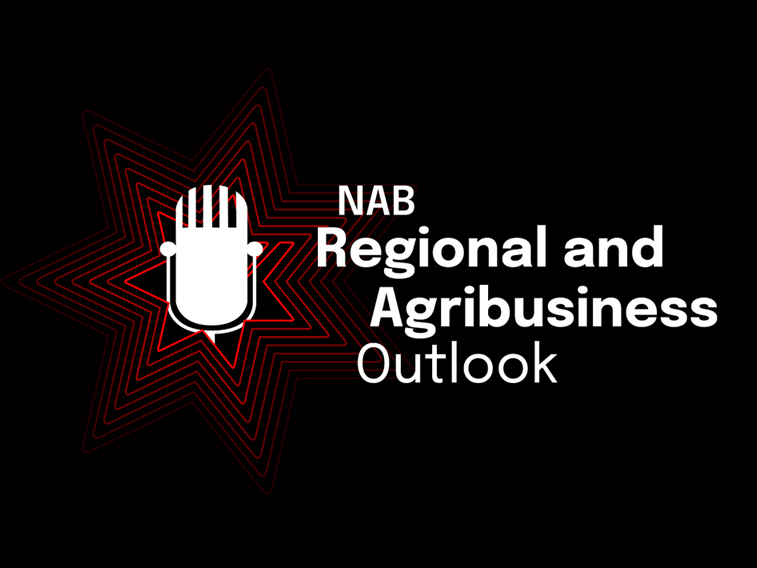Take a closer look at Australia’s Farm Management Deposits scheme with NAB senior leaders.

Podcast
A skills shortage is affecting every aspect of Australian agriculture. Professor Jim Pratley, the author of a government review of agricultural education and training programs, discusses how schools and universities are helping boost the number of qualified people in the sector.

Seven years ago, when Professor Jim Pratley and his team started monitoring employment in the agricultural sector, the official view was that there were more graduates than jobs.
“We found it was the other way round – there were actually as many as six jobs for every graduate,” says Pratley, Professor of Agriculture at Charles Sturt University and Secretary of the Australian Council of Deans of Agriculture. “Data to the end of 2014 suggests this has softened a little to about four jobs for every graduate, but this is probably on the low side. We base our research on the number of jobs advertised, but employment agencies tell me that qualified people often get approached directly.”
This situation can be very frustrating for employers.
“Farmers are being forced to take on people without appropriate qualifications,” says Pratley. “This is bound to limit productivity. And, looking ahead, we’re going to need a lot of well-trained, qualified people if we’re going to capitalise on the opportunities being created in Asia.”
There’s still a widespread misconception that agriculture is only about farming.
“Many young people assume that, if they don’t have a farm, there’s no point in studying the subject,” says Pratley. “In fact, there are very few skills that can’t be applied to agriculture these days, including some, such as robotics, which didn’t exist 20 years ago.”
The Career Harvest website, a hub for cutting-edge careers in the food and fibre industries, lists 10 agricultural career pathways. These fall under the headings of environmental and sustainability; humanitarian; economics and business; primary production; research and development; computer and IT; engineering; biochemistry and molecular biology; communications; and plant, animal and food science.
In 2012, Pratley was asked to conduct a review of agricultural education and training programs in both the school and tertiary sectors in New South Wales. His report was published the following year, and the government is supporting 26 of his 27 recommendations.
One was to establish a “Lighthouse” program to enhance the delivery of agricultural education in schools.
“We have four specialist agricultural high schools in NSW, and it’s important they continue to lead the way but, if we’re going to promote agriculture throughout the school system, we also need a second tier,” says Pratley. “The Lighthouse program provides that by recognising schools that are not only good at agriculture, but also have the capacity to share their knowledge with other schools and, where possible, help them develop agricultural programs.”
Pittwater High School, one of the seven schools recognised so far, is notable for its urban setting in Mona Vale.
“As the world’s population is growing, and the amount of space available for food production is dwindling, the study of agriculture and sustainable practices is important,” says Pittwater High’s Principal Jane Ferris. “Agriculture is offered to our students so that they develop an appreciation of these issues, and some are now planning a career in agriculture. As a Lighthouse school, our agriculture teachers are also playing a mentoring role with their colleagues in other schools across the state.”
At a tertiary level, the first national education standards for agriculture have been developed to help universities design and deliver programs that will attract more students and produce graduates with a predictable set of basic skills. The project’s leader is Dr Tina Acuna, Senior Lecturer – Crop Science, and Degree Coordinator, Discipline of Agriculture and Food Systems at the University of Tasmania.
She says the national agriculture education standards define the nature and extent of agriculture and also outline the key threshold learning outcomes for graduates. This includes what a student should know, understand and can do on graduation.
“The aim of the standards isn’t to make every university the same, or even to standardise the curriculum,” says Acuna. “It’s about enabling students to have confidence their degree is held to a high standard.”
Pratley is confident the tide has turned.
“There’s been a bit of a revolution going on in the past five years, and I think we’re on the cusp of something terrific,” he says. “Certainly the agriculture industry is becoming more professional and sophisticated by the day. Our dependence on rural industries looks set to increase, and we need to make sure we’re ready for that by supporting and educating our young people.”
More for NAB:
© National Australia Bank Limited. ABN 12 004 044 937 AFSL and Australian Credit Licence 230686.